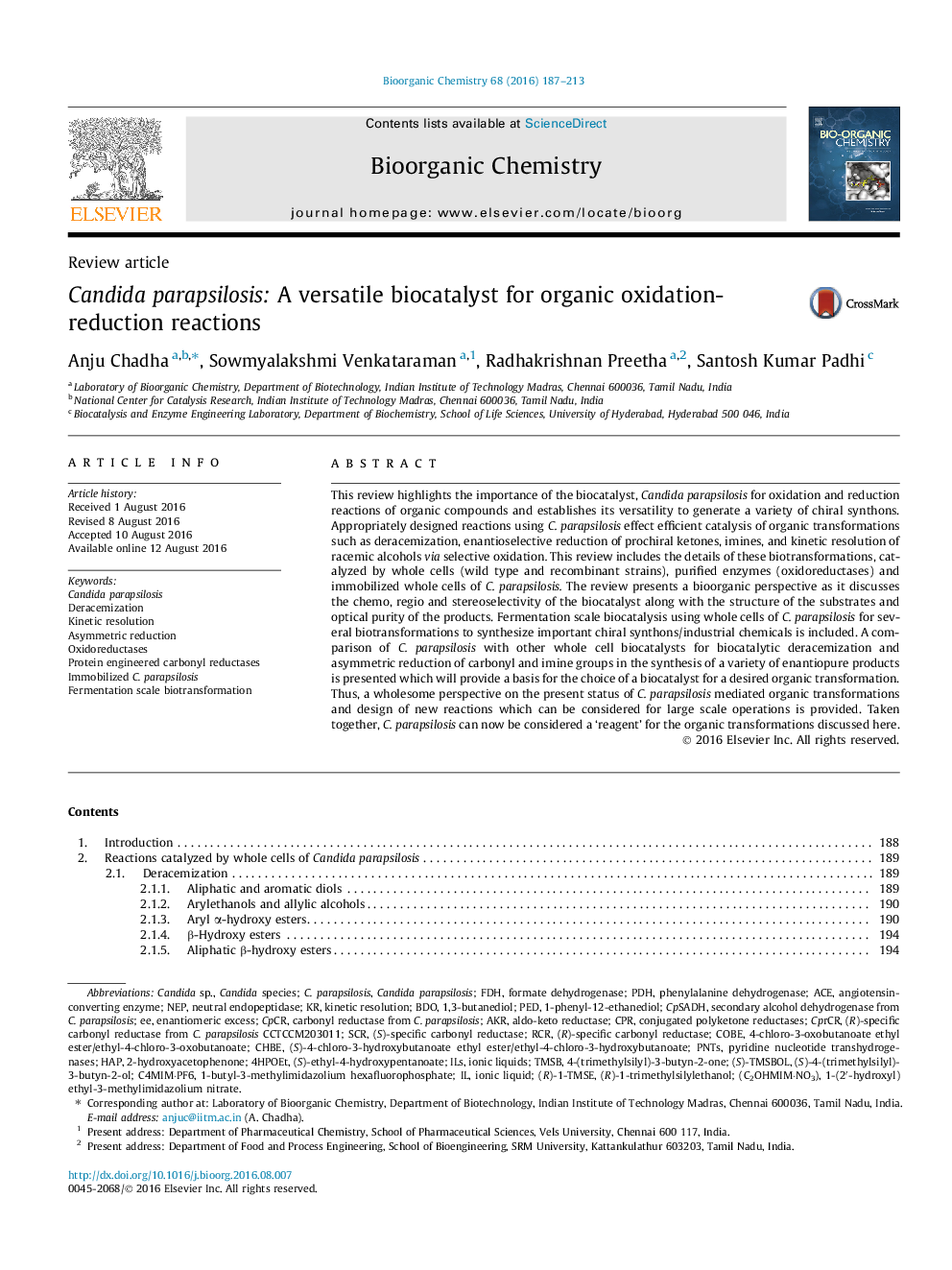| Article ID | Journal | Published Year | Pages | File Type |
|---|---|---|---|---|
| 1355574 | Bioorganic Chemistry | 2016 | 27 Pages |
•C. parapsilosis catalyzes:othe asymmetric reduction of carbonyl compounds and imines.oderacemization reactions to prepare optically pure secondary alcohols.ooxidative kinetic resolution and oxidation reactions.•The mechanism of redox reactions are understood using purified enzymes of this yeast.
This review highlights the importance of the biocatalyst, Candida parapsilosis for oxidation and reduction reactions of organic compounds and establishes its versatility to generate a variety of chiral synthons. Appropriately designed reactions using C. parapsilosis effect efficient catalysis of organic transformations such as deracemization, enantioselective reduction of prochiral ketones, imines, and kinetic resolution of racemic alcohols via selective oxidation. This review includes the details of these biotransformations, catalyzed by whole cells (wild type and recombinant strains), purified enzymes (oxidoreductases) and immobilized whole cells of C. parapsilosis. The review presents a bioorganic perspective as it discusses the chemo, regio and stereoselectivity of the biocatalyst along with the structure of the substrates and optical purity of the products. Fermentation scale biocatalysis using whole cells of C. parapsilosis for several biotransformations to synthesize important chiral synthons/industrial chemicals is included. A comparison of C. parapsilosis with other whole cell biocatalysts for biocatalytic deracemization and asymmetric reduction of carbonyl and imine groups in the synthesis of a variety of enantiopure products is presented which will provide a basis for the choice of a biocatalyst for a desired organic transformation. Thus, a wholesome perspective on the present status of C. parapsilosis mediated organic transformations and design of new reactions which can be considered for large scale operations is provided. Taken together, C. parapsilosis can now be considered a ‘reagent’ for the organic transformations discussed here.
Graphical abstractFigure optionsDownload full-size imageDownload as PowerPoint slide
